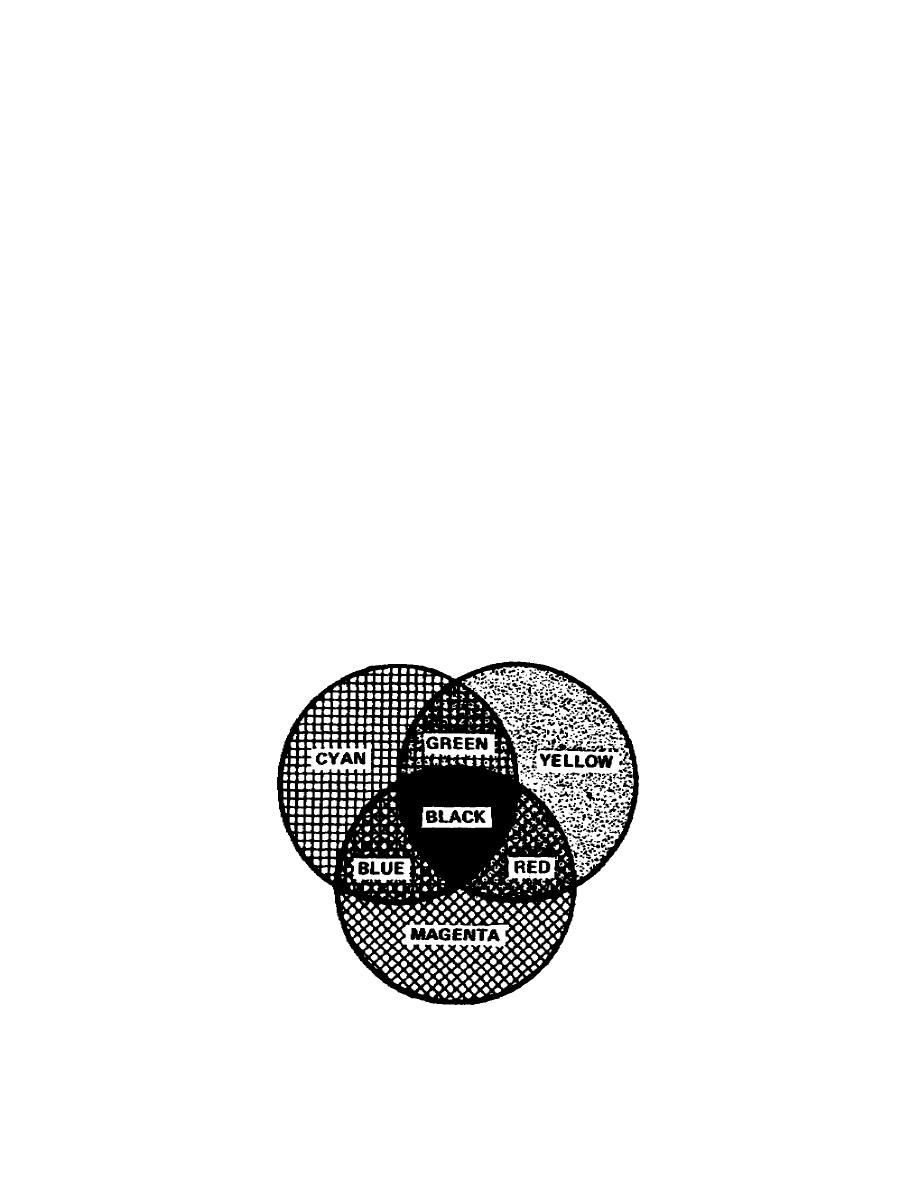
Newer model color printers have "Dichroic Glass filters." These filters are more accurate and produce
better color images than CP or CC filters.
b. In the additive color process, where three projectors were used, (one lens was covered with a
red filter, one with a green filter, and one with a blue filter), we were able to produce any desired color.
Theoretically, any filter transmits light of its own color and absorbs all other colors. The amount of
absorption depends upon the density of the filter. Therefore, we could not place all three filters over a
single light source. To a certain extent, the filters are mutually exclusive. That is, none of them
transmits light passed by either one of the other two. Consequently, any two of the filters used in
combination in front of a single light source will absorb all of the light.
c. Since a filter of any of the additive primary colors transmits only that one primary color, the
subtractive primary colors are used as filters in the structure of color materials. This makes it possible to
transmit any two of the additive primary colors and subtract the third.
d. The term subtractive primary color has the same meaning as secondary color as used when
discussing filters. The colors yellow, cyan, and magenta can be called either secondary colors or
subtractive primaries.
e. A cyan filter transmits blue and green light, but absorbs red light. In other words, it subtracts
red from white light. Similarly, a magenta filter (which transmits red and blue) functions by subtracting
green from white light. A yellow filter will transmit green and red and subtract blue. These are the same
colors used as filters on enlargers.
f. Since each of the subtractive primary filters transmits approximately two-thirds of the visible
spectrum, we can superimpose any two of them over a single light source to produce other colors. Refer
to Figure 2-3 for an illustration of the principle of the subtractive color process. Notice
Figure 2-3. Subtractive color system
14


 Previous Page
Previous Page
